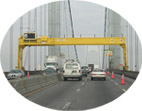Summary:

What Does Our Affiliation with the CMAA Mean for Our Customers?
The CMAA (Crane Manufacturer’s Association of America) is an independent trade association founded in 1955. Companies striving for admission must undergo a thorough application and review process. Member companies represent leaders in the overhead crane industry.
CMAA member companies are concerned, conscientious manufacturers who meet regularly to review and revise standards for the mechanical, structural and electrical design of overhead cranes. CMAA members also formulate guidelines for the proper use, operation and maintenance of those cranes.
As a member of the CMAA, North American Industries, Inc.:
- meets high standards in engineering design, production, and related operations
- maintains a position of technological advancement
North American Industries is a proud member of:
Material Handling Industry of America (MHIA)
Crane Manufacturers Association of America (CMAA)
NAI prevents the problems you
could encounter with other cranes:
If your crane coasts more than a few feet, then it
is likely that it uses electric motor brakes and that,
like most cranes, the brake pads haven't been replaced
(they require replacing or adjusting every 3 months).
We use a mechanical braking
system that never needs adjusting
or replacing. This provides a gentle, consistent
coasting stop that does not vary over time. For cranes
that travel over 100 FPM or require quick stopping,
we suggest considering the soft-stop feature of a
variable speed inverter.
We use a minimum of 2 bearings per wheel. All of our bearings are Class "D" which means they are designed with a minimum life expectancy of 10,000 hours of actual motor on-time. This is double the Class "C" rating - bearings for Class “C” cranes have a minimum life expectancy of 5,000 hours. Our Class "D" bearings are also sealed-for-life and never need lubricating.
Our contactors, rated for 20,000,000 stop / start
cycles if used in conjunction with inverters or electronic
soft start features, should never need replacing under
normal operating conditions. See our Technical Report
entitled "Electrical
Contactors: How Long Should They Last?"
NAI pendants are ergonomically
designed to be easily held in one hand, and are constructed
of a durable thermoplastic material. The pendant cable
has 2 steel wires built into the cable jacket for
permanent strain relief.
Our components--bearings, contactors, gearboxes, motors
and electrical systems--are designed to industry standards,
and most are readily available throughout the U.S.
All motor name plates and gearbox name plates are
clearly labeled with the original manufacturing information.
And virtually every spare part for the crane (excluding
the hoist) is in
stock here at North American and can be shipped
immediately.
Our mechanical braking system on
the trolley and bridge eliminates the need to adjust
brakes on a regular basis (typically every 3 months).
There are no brake pads to change or adjust with our
mechanical brakes. This will reduce overall maintenance
and extend the life of the wheel gears and pinions.
Low Maintenance:
Most North American Industries' cranes also have:
- Sealed ball bearings, which never need lubricating
and keep out dirt and grit – a major cause of
bearing failures in cranes.
- Gearboxes with high-grade synthetic oil
that never needs changing.
- Automatically resetting thermal overloads, instead
of fuses, which must be replaced. These overloads
are placed inside all 3 motor windings to assure the
most accurate measurements.
- A cable for the push button with 2 steel cords
built into the jacket. The cable holding the push
button is usually abused, scraped and used as a ladder.
Ours are able to handle the strain. The wires in the
cable all lay straight, and are never spiral wrapped.
- No electric brakes on the bridge and trolley. Electric
brakes have brake pads that must be continually adjusted
and changed every 1–2 years. If they are not
changed, the crane rolls 10 to 20 feet before stopping.
The operator, in turn, learns to reverse the crane
to stop it. This "Reverse Plug" will damage
the gearbox. A North American crane uses a mechanical
brake (high ratio worm gear reducer) which stops the
crane gently. This device has no brake pads to change
and lasts 20 years.
- Approximately 10–20% spare conductors
for our bridge electrification cable and our pendant
cable. If a wire breaks, you don't have to replace
the cable, just connect the spare conductor.
- Engineered features for easy maintenance. When
maintenance is needed, our cranes are designed to
allow quick repairs. Our wheels can be removed from
above. You do not have to lift the crane off the runway
rails. Our electrical panels are not crowded, and
the wiring diagram is mounted inside the panel.
Class "D" crane
NAI produces Class “D” heavy duty cranes
rather than moderate-duty Class “C” cranes.
A Class "D" crane is designed to make
twice as many lifts in an hour and lift the
full rated load 30% more often than a moderate-duty
Class "C" crane. Physically bigger and stronger
than a Class "C" crane, Class “D”
cranes generally last 30 to 40 years. NAI also offers
a two year warranty.
Hoists supplied on our cranes are rated by HMI (Hoist
Manufacturers Institute) as H-4 for heavy-duty use.
Many competitors supply H-3 average duty hoists, or
H-2 infrequent use hoists. See our parts department
for further information on hoists.
Motors on the bridge and the trolley of NAI class
“D” cranes are 60-minute motors. A Class
"C" crane uses 30 minute motors. All motors
have Class "F" insulation, which allows
the motor to run hot and still work well. Competitors’
cranes often have Class "B" insulation,
which would cause the motor to burn out at temperatures
that our Class “F” motors can withstand
easily.
|







